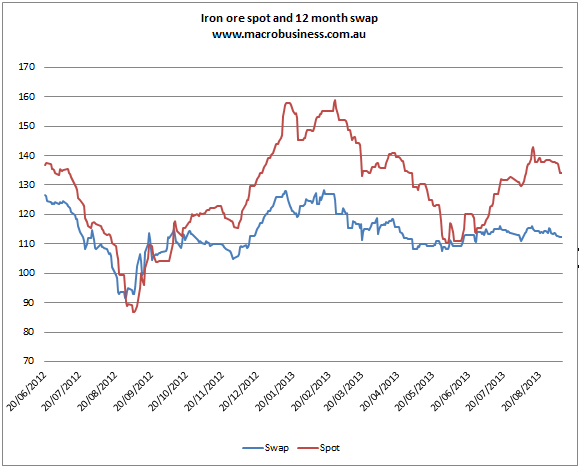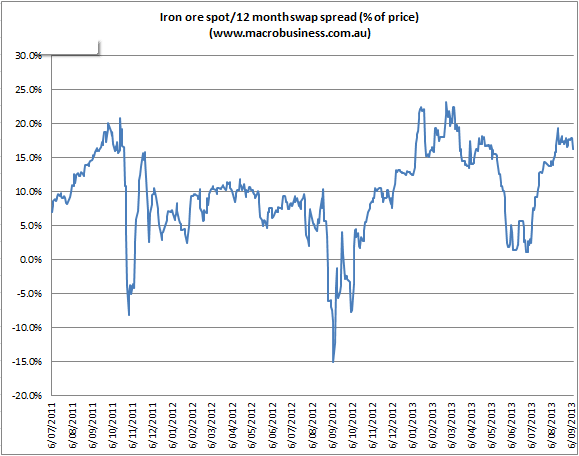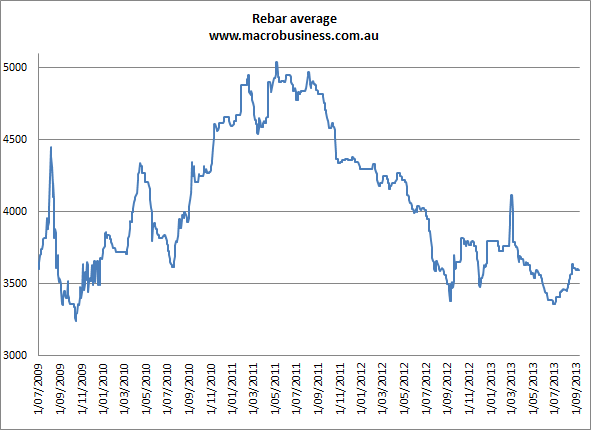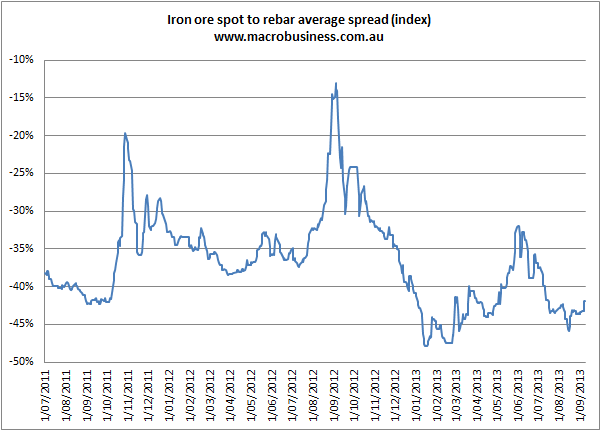Find below the iron ore price table for September 6, 2013:

Rebar futures fell and iron ore port stocks jumped to their highest level in six months at 78 million tonnes despite more declines in Indian sourced inventories.
To the charts. First, spot and the 12m swap:

Both are forming new downtrends with $110 the support for swap and $130 for spot. I expect more weakness ahead and for both supports to break. The spread remains stretched, on my reckoning by 10% or so:

The rebar rally has also had its day and still shows signs of major overcapacity in steel:

The spread has a little inverted head and shoulders pattern and looks set to close up. So it should, it’s at least 10% too wide and probably more:

The Baltic Dry is still high and rallying but it looks like seasonal weakness is upon us.
In news, it seems the high iron ore price is generating a little capex trickle. From The Australian:
WESTERN Desert Resources has secured the estimated $100 million in debt funding needed to complete the company’s Roper Bar iron ore project in the Northern Territory, in an indication of how resurgent iron ore prices have reopened funding avenues for small resource companies.
South Australia-based Western Desert said it had secured the remaining funding needed for Roper Bar’s $200m development via Macquarie Bank, clearing the way for first iron ore shipments from the mine within 90 days.
Western Desert managing director Norm Gardner told The Weekend Australian that he attributed the funding breakthrough to the recent improvement in iron ore prices.
“It took a while but we got good offers from two of the big banks in Australia,” he said.
“If the price of iron ore was $100 (a tonne), it probably would have been difficult.
“To be realistic, even six months ago it would have been a lot tougher to get the money we needed.” The benchmark price from iron ore has improved by 58 per cent in the past 12 months to about $US137 a tonne.
We’ve recently had similar news from Atlas Iron. Note that these projects are small and, more importantly, nimble. Roper Bar is very short lead time because it is a light-infrastructure extraction. It scrapes up shallow iron ore, trucks it to the coast where an existing port barges the cargo to an anchored capesize vessel in the gulf. No epic train or port infrastructure spend required.
It’s good to see the banks supporting these juniors and perhaps it presages a thawing for larger aspirants. Gina’s Roy Hill is also talking to the banks but wants a lot more money to execute a more typical “big infrastructure” plan. The problem is that that means bigger start-up costs and less flexibility should prices fall. I continue to hope that the project will get funding. It will make life very interesting for all!

